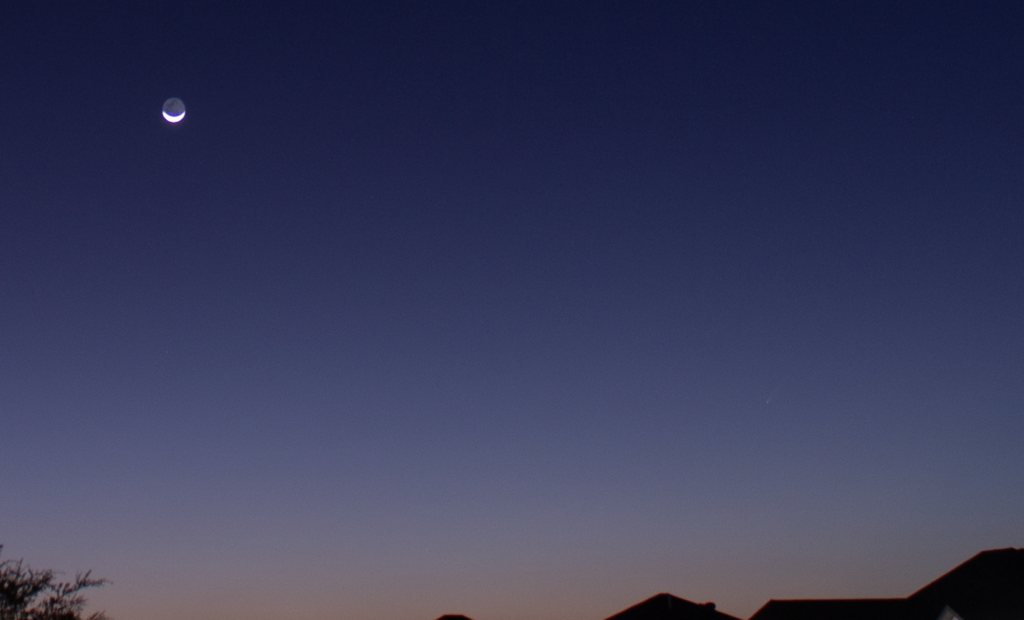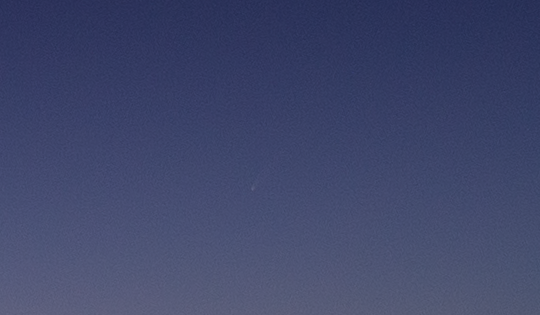Comet Tsuchinshan-ATLAS C/2023 A3
We have been blessed with some clear skies lately, just in time for comet Tsuchinshan-ATLAS C/2023 A3 as it completed its trip around the Sun on its way back out to the Oort Cloud. It is currently visible to the east-southeast in the predawn sky in the northern hemisphere.
After fixing breakfast this morning, I went out to look for it. At first, I couldn’t see it with the naked eye. It is still fairly swamped by predawn sunlight near the horizon. But after taking some long exposures with the Canon Rebel T3 DSLR on a tripod I was able to find it in the images, figure out where it was in the sky, and see it (dimly) with my own eyes. It’s not spectacular, but when it comes to comets, I will take whatever I can get!


The Purple Mountain Observatory in China discovered the comet on January 9, 2023. Tsuchinshan (choo-cheen-SHAHN) means “Purple Mountain” in Chinese. The ATLAS survey (Asteroid Terrestrial-impact Last Alert System) at the Sutherland Observatory in South Africa independently discovered it on February 22, 2023. After additional data on its orbit had been gathered, both observations were determined to be of the same comet. (The Palomar Observatory had imaged the comet in December 2022, but it was not discovered in the images until later.)
The “C” in “C/2023” indicates that it is a “long period comet.” Long period comets are those that have an orbital period greater than 200 years. This one takes 80,000 years to go around the Sun.
“2023” is, of course, the year that it was discovered.
The “A” in “A3” indicates the time of year the comet was discovered. Months of the year are divided in half and assigned a letter of the alphabet. So, the first half of January is A, the second half of January is B, the first half of February is C, and so on. This comet was discovered in the first half of January. The “3” indicates that this was the third comet found in the first half of January.
So, to summarize, it is a long period comet that was discovered by the Tsuchinshan Observatory and the ATLAS survey and was the third comet found in the first half of January 2023. There’s your comet nomenclature lesson for the day.

Leave a Reply